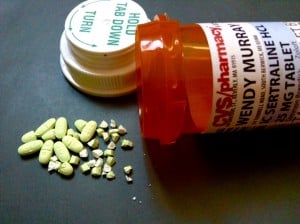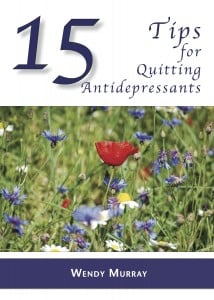
In honor of Mental Health Awareness month, I have been posting about the long and arduous journey I took to get off antidepressants. They had been prescribed for me by a general practitioner when I was experiencing a difficult passage in my life and, over time, had come to affect my health adversely. I made the decision to get off them but it was a long haul. This post addresses how, by my third attempt, I had learned some fundamental ways to broach the taper of these meds and how, by God’s grace, I succeeded. Here are a few of the strategies I implemented that enabled me, at long last, to find success:
Once I made the decision to begin another taper and resolved to do whatever it takes for as long as it takes, I had to execute a plan for which I considered several factors, the first being the time of year.
The Season on the Calendar
I had been reinstated (against my will) in the month of December and allowed my body several months to make the necessary adjustments. As soon as I felt confident that I was physically stable, I made plans to start the taper based upon the calendar. I determined I would start again in early May because this meant that, for the majority of the effort, the weather would make it possible to be outside and active. I am a gardener and derive great pleasure from being outside, planting, digging, pruning, transplanting — basically, doing all those smalls things that healthy gardens require to flourish. So I plotted the roughest patches of my taper around those months when I would be undertaking an activity that brought me pleasure and also got me outside.
In addition, the warmer weather also made it possible to consistently exert myself physically, which is also an extremely valuable element of a successful taper. Physical activity keeps blood circulating and the more blood that rushes through the brain, the better you will feel. Plus, being physically expended makes for better sleep. Difficultly sleeping is a signature feature of tapering and everything we can do to overthrow insomnia will help over the long haul.
Season of Life
Another important element I considered before beginning another taper was the circumstance of my life at the time. During my first attempt, which failed, I was living in a place that was not working for me: I was far from my grown sons in a state and city where I knew very few people and was struggling to get work and to fit in. I was unhappy, in other words. I rectified this situation before beginning a second taper by moving back to the locale closer to my children — thus removing one of the key obstacles that had proven a significant factor in my struggles. This was a good decision. Even so, the circumstances of my life even at that point were still challenging and I discovered, this too, contributed to the sabotage of my second failed attempt to discontinue.
There were many difficult trials with this second attempt, which I’ve already noted. By the point I began the third taper I had moved into a more manageable living arrangement in a town where I already had a network of friends and colleagues. I made very clear calculations about the “season” of my life and whether or not the outer circumstances would support or sabotage my struggle. I had determined, after great pains and a few misfires, that this was the time and that this would be a do-or-die effort. I marked the day on the calendar to begin. Then did. Once again, I entered the world of cutting tablets and keeping a log of my dosage and also my symptoms.
By “choosing a plan” I mean that I put together a concrete strategy for how I would go about getting off antidepressants. This began with a starting point (obviously), but I resisted the temptation to set a pre-established ending point. For this kind of effort it is best to do away with thoughts of deadlines. The primary concern during my taper was to preserve a degree of a quality of life while slowly, incrementally reducing my dosage allowing time for my brain chemistry to adjust. I knew that if quality of life suffered in deference to a deadline, I would be destined to fail.

[I wrote a book about how I strategized and completed a successful taper off antidepressants. Purchase a print copy here or an ebook here.]
Prepare a List of Things to Do When the Going Gets Rough
Once I determined the day on which I would start cutting pills, also as part of the plan, I made a contingency list of activities to undertake when the hard moments would inevitably set in. I kept this list ever in my mind because I knew that during the disequilibrium of the taper your thinking becomes confused. You will become agitated, distracted and distraught. Having a prewritten list of “things to do” during one of these difficult moments — and then following it — enabled me moment by moment to get through another day and to take another inch. If there is anything I learned from the two previous failed attempts, in the battle to get off these meds, ground is taken only by the inch. It helps greatly and may save the day, to have a predetermined contingency plan for something to do when the demon rears its head. For me the list included but was not limited to:
- Plan a garden and research it accordingly; then plant it
- Go for a walk
- Take up painting or drawing
- Listen to running water
- Keep a Thankful Journal
- Listen to music
- Spend time in nature walking or exploring a new garden
- Pray (always!)
- Go on a lunch date with a friend
Determine Your Sequence of Dose Reduction
The generally accepted sequence of safe reduction is in 10 percent increments. That means that since I was starting at 25mg of Zoloft, I began my taper by taking 22.5mg (10 percent of 25 is 2.5; 25 – 2.5 = 22.5). As had been my habit, once I began to taper I monitored myself to keep track of what symptoms, if any, would come upon me. I expected to feel some agitation and restlessness, also knew that at this slow decrease in dosage, the symptoms would be both

anticipated and manageable. When I began to feel them, I recognized them for what they were and so was not alarmed. At these times I consulted my predetermined list of things to do and then went out and did something.
For me, the symptoms at a 10-percent incremental taper usually lasted for a few weeks. Then, at some point, I would begin to feel them subside. Once they subsided, I would wait another week. Then, once I’d navigated approximately two weeks of minimal–or no–symptoms, I would then drop down another 10 percent. Again, using the example above: since I had been taking 22.5mg I would drop to 20.25mg.
This process would continue for many months during which time, day-by-day, I tracked my symptoms and undertook appropriate activities I noted on my list. Over time, these notations brought me encouragement about the steadiness of my progress.
My final post on this important issue will sum up my experience and give a measure of how I have felt being free of SSRIs. Stay tuned.










